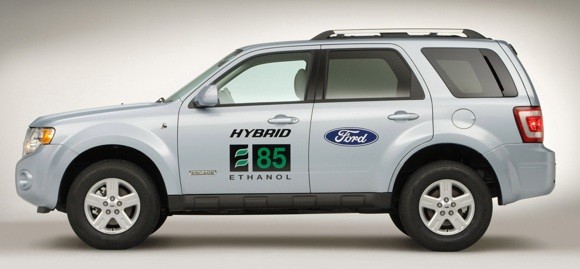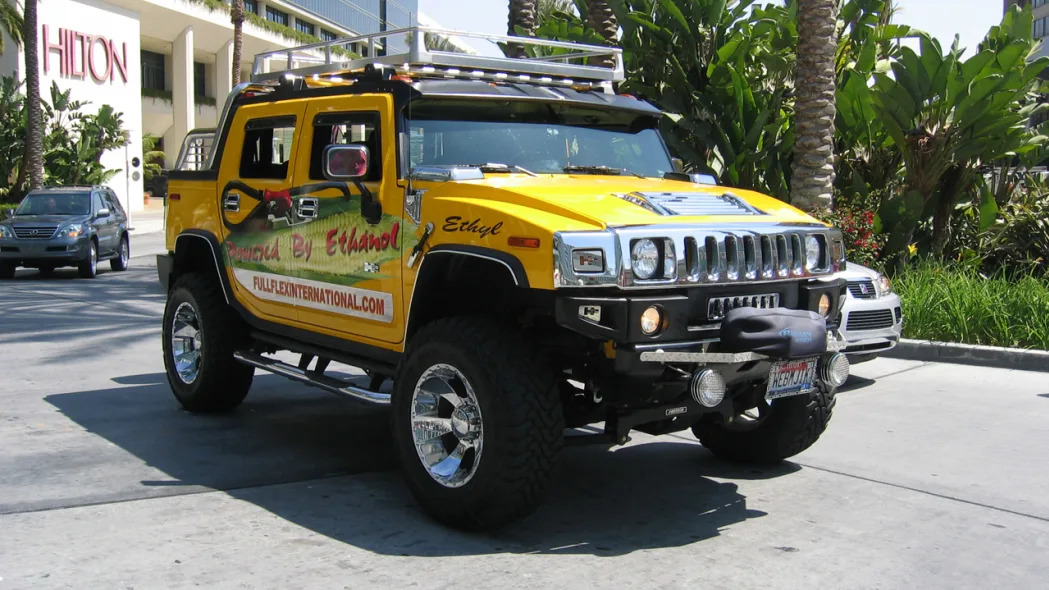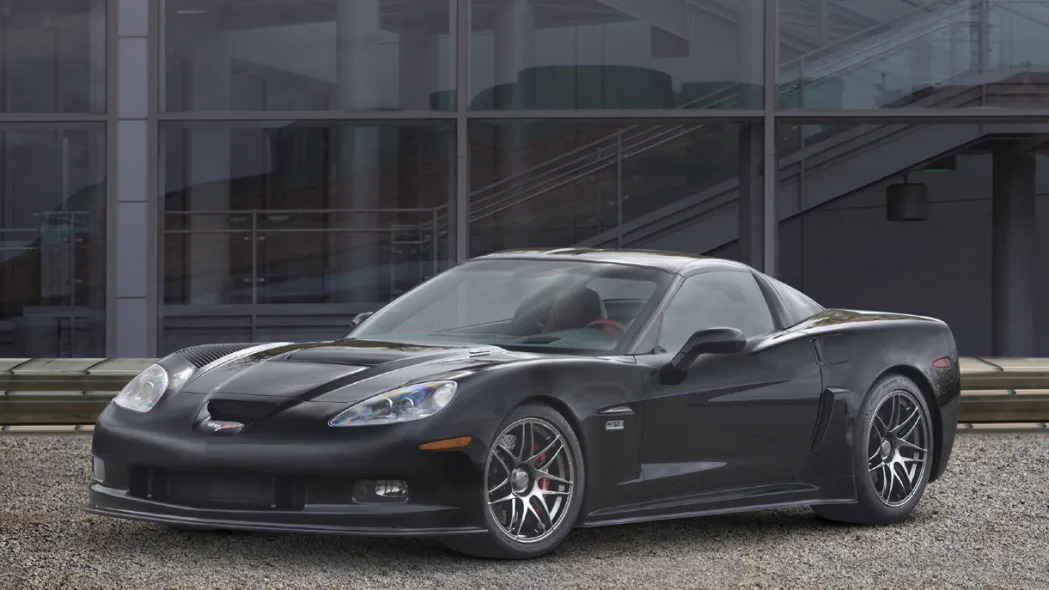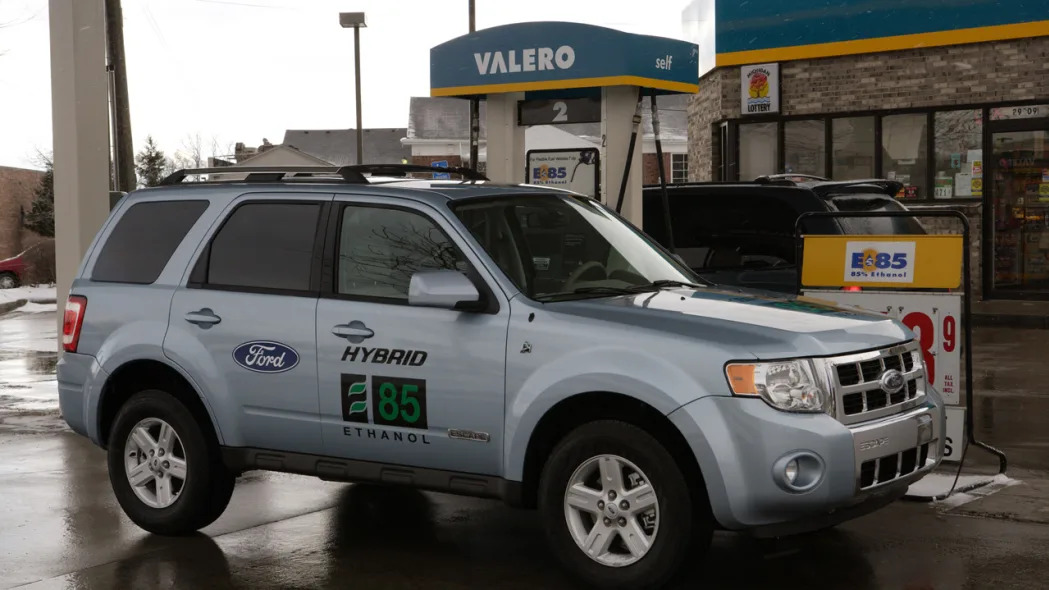Click above for high-res gallery of the ethanol Hummer
There is a lot of controversy surrounding biofuels. Various studies have shown that crop-based biofuels contribute to global warming more than they help prevent it, that ethanol is no better than gasoline, and that South East Asian rainforests are suffering for biofuels, to name just three. The most dramatic recent claim was that ethanol was the worst type of renewable energy.
Currently, popular fuel crops include sugar cane (in Brazil), sugar beets (Europe), and corn (United States). The good news is that you don't need to grow crops for the express purpose of making them into ethanol to create the biofuel. You can also use beer byproducts or get help from sea grubs, among many other methods. When you use these non-crop alternative methods, the result is often called cellulosic ethanol. Since ethanol has all sorts of negative connotations, some suggest we rename the fuel. "Celluline" is one possibility, but for this post we'll stick with cellulosic ethanol.
 Cellulosic ethanol is the main face of so-called second-generation biofuels. It's called "cellulosic" because it is made from lignocellulose. Lignocellulose, in turn, is made up of lignin and cellulose that is present in the cell walls of woody plants. Follow us past the jump for an expanded primer on cellulosic ethanol and it's place in green motoring today.
Cellulosic ethanol is the main face of so-called second-generation biofuels. It's called "cellulosic" because it is made from lignocellulose. Lignocellulose, in turn, is made up of lignin and cellulose that is present in the cell walls of woody plants. Follow us past the jump for an expanded primer on cellulosic ethanol and it's place in green motoring today.
In short, then, cellulosic ethanol is a biofuel that is made from non-edible parts of plants as well as things like wood and other biomass sources. Of the major automakers, GM is far our in front in supporting ethanol as an gasoline alternative. In 2008, the General invested in two cellulosic ethanol start-up companies, Coskata and Mascoma. Toyota also recently signed up to work with a group of Japanese companies to produce low-cost cellulosic ethanol by the middle of the next decade. Coskata's process, for example, uses propriety microorganisms living in a bioreactor to make ethanol from pretty much any biomass soruce. You can get a feel for how Coskata plans to enter the marketplace by reading through their January 2008 slide presentation in the gallery below.
At the Platts Cellulosic Ethanol Conference in Chicago last fall, a representative from the Department Of Energy discussed the DOE's Biomass Program. The program's short term goal is to have cost-competitive cellulosic ethanol (i.e., fuel that costs at most $1.33 to make per gallon by 2012). The DOE is conducting bioenergy crop trials using switchgrass, sorghum, and more (see this map).
Once we figure out how to make cellulosic ethanol cheap enough to sell at a profit, what then? The good news is that cellulosic ethanol and corn-based ethanol perform exactly the same once they are made, so the way we use ethanol now won't change once it's all made from biosludge. Right now, in the U.S., a lot of gasoline available at the pump is actually a blend of gasoline and up to 10 percent ethanol. This is called E10 fuel. Some pumps, often marked with a yellow handle, dispense E85 (15 percent gasoline with 85 percent ethanol), but those pumps dispense less than one percent of the ethanol used in the U.S. In fact, once annual ethanol production in the U.S. reaches 14 billion gallons, which will likely happen in a few years, the E10 market will be saturated. To give the excess ethanol a place to go, the DOE is testing whether intermediate ethanol blends - E15 and E20 - should be more widely used.

It is not that difficult or expensive to turn a standard gasoline engine into one that is E85-capable, but you do need to make some upgrades. The fuel pump, level sender, the on-board diagnostics sensor, fuel injectors and seals all need to be changed. The pressure in the fuel tank also needs to be monitored and the software needs to be recalibrated so that the system knows what blend of ethanol and gasoline is coursing through the fuel line without the user telling the car what she just filled up with. The U.S. government says that about 300,000 E85-capable vehicles were in use in America in 2006, the last year for which data is available. This number is much lower than one we've seen from the Auto Alliance, which claims there are "about 5 million vehicles on the road today that have been built to use up to 85 percent ethanol + 15 percent gasoline (known as E-85)." The difference is that the government only counts vehicles it believes are being fueled with E85. Considering all of the trouble associated with corn ethanol in the U.S., cracking the cheap cellulosic ethanol nut will go a long way towards making E85 a truly green fuel.
To keep up to date on the ethanol industry, keep checking our ethanol category using this link.





Sign in to post
Please sign in to leave a comment.
Continue